
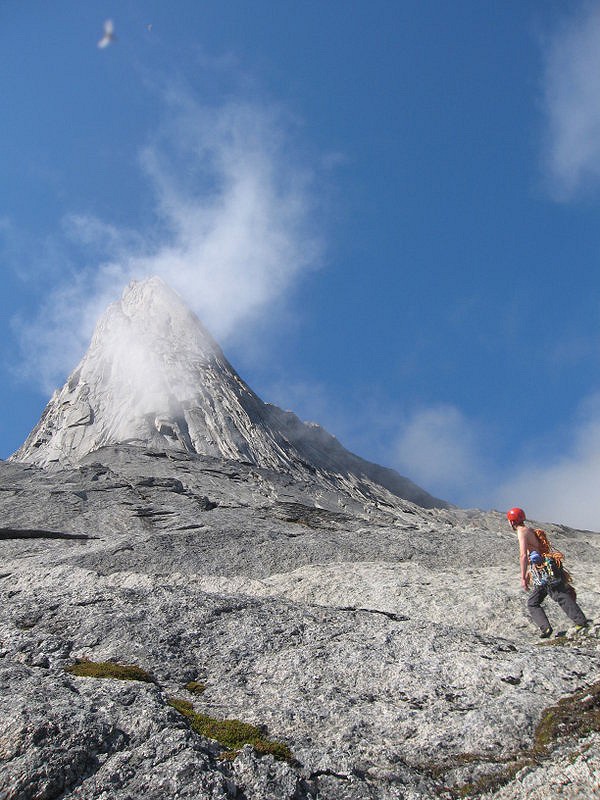
Es Tresidder gives up the full low down:
When we arrived in basecamp below the imposing towers of the Tinninertup group and the awesome sweep of walls of the Hermelnbjerg, only a handful of routes existed on the rockfaces above us. Apart from an outstanding Irish expedition in 1971 that had climbed all the major summits of the area, the few previous expeditions had all suffered prolonged spells of unpredictable weather and required big-wall tactics and some aid on their routes. Typically each expedition had managed one route per trip, and had taken many days to achieve this. We fully expected the story of our expedition to be similar. The first two days of our trip stuck to the planned script, with thick fog and drizzle greeting our arrival at the head of the Tasermiut fjord. From then on, however, things took an entirely different direction. In the four weeks we had at basecamp we had just three days when the weather was too bad to climb, and were very pleased to take advantage of the weather by making fast ascents of seven new routes and two repeats.
First off, Tony Stone, Ruben Gutzat and James Vybiral climbed a route on the unclimbed east face of Tinnninertup III. Climbing in mist for most of the way, the trio climbed a lot of moderate slabby ground before adding two steeper pitches of about HVS to gain the summit ridge to give “Head in the clouds” (HVS, 2 technical pitches, alpine AD, 650m).
Next up Dan McManus and I set off to try the fine-looking east face of Tinninertup II. Thinking that this would probably require big-wall tactics, we set off alpine style “just for a look” because hauling would be so obviously grim on the moderate ground characterising the lower section of the wall. Where the wall steepened we were pleasantly surprised to find pitch after pitch of sustained climbing on superb quality granite. Around 14 hours after setting out, and after about 700m of free climbing up to E5 6a, we reached the spectacular summit for a brew and a rest in the twilight before descending the Irish route back to camp. Several mosquito ridden days later we christened our route “Piriton Pillar” after the copious amounts of anti-histamine we were consuming.
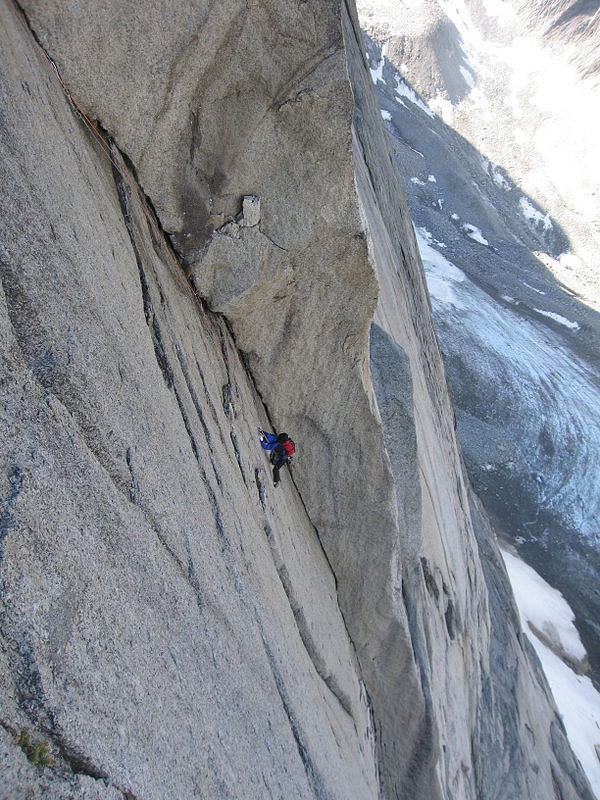
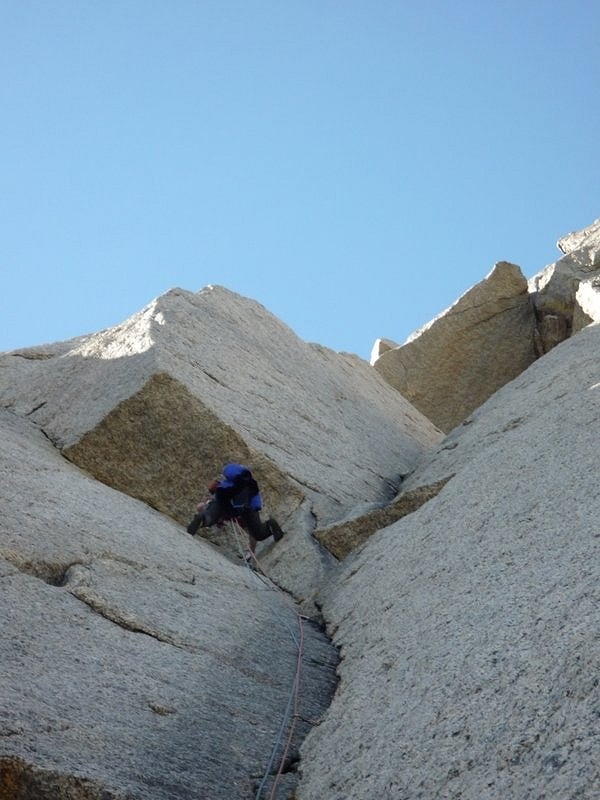
Dan and I next turned our attention to the vast west pillar of the Hermelnbjerg, where the only existing route was a Norwegian big wall route climbing the prominent chimney in the left-hand side of the face. Our route focussed on finding a way through a spectacular feature we dubbed “The Eye”, a huge circular section of very steep corners and arêtes a third of the way up the wall. Our first attempt ground to a halt near the top of The Eye, after a fall for me and the realisation that the way we had planned to exit The Eye was too bold. On our second attempt, on the 27th July, aided by the knowledge of the ground, we were quicker and able to break up the leading to allow Dan to start what we assumed to be the crux fresh and fully psyched. A hidden hold saw him pull through the roof at the top of The Eye, and we set to work on unknown ground above. After 18 hours and around 1000m of climbing, we gained a key bivi ledge that we had spied from the ground where we were able to melt snow, eat and get a few hours sleep huddled under our one sleeping bag. The following day brought four cold pitches up corners and chimneys to the sunny summit ridge, from where we scrambled to the west summit of the Hermelnbjerg to complete “Ramblin' Man” (E5 6b, 1200m). The descent was made more interesting by the retreat of a glacier that had previously allowed an easy walk from the col below the peak back to basecamp, meaning we had to abseil four pitches before gaining scree leading back to camp.
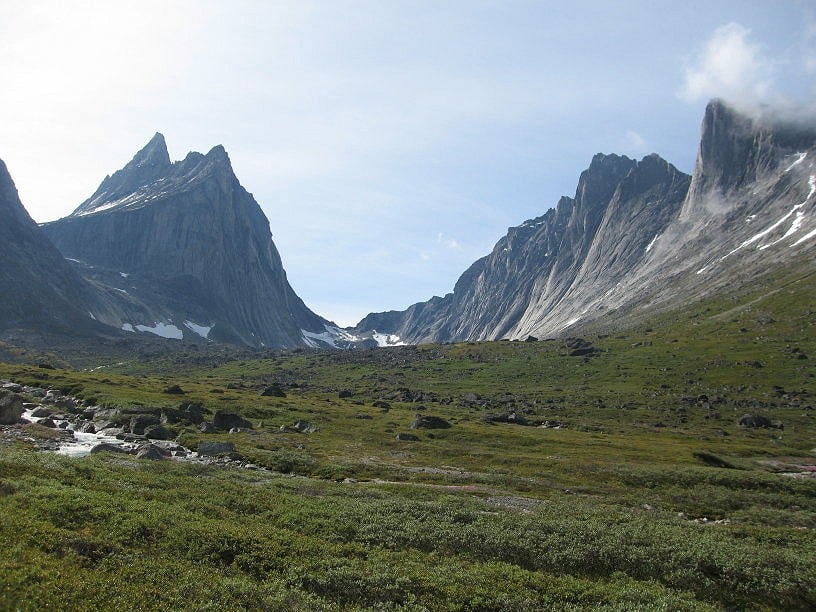
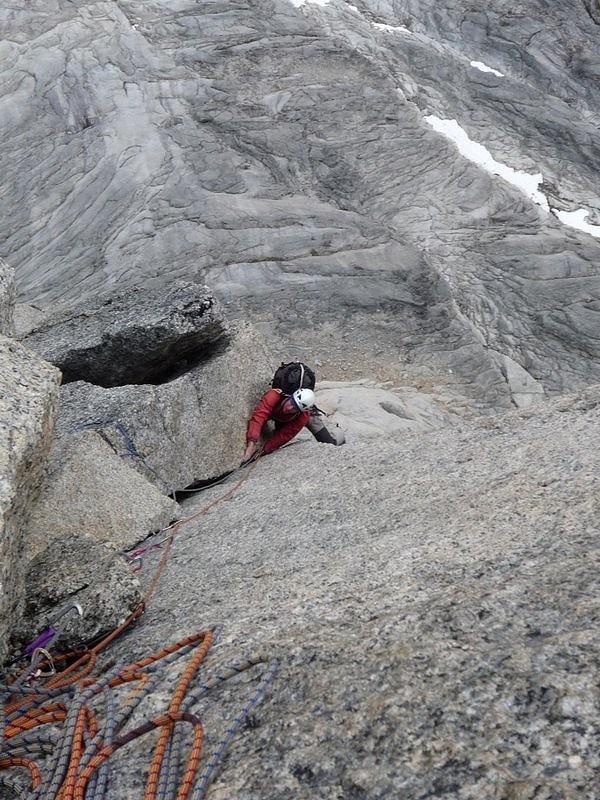
Conscious that the most spectacular summit in the area, the main summit of the Hermelnbjerg, had probably not been visited since the 1971 Irish expedition, Dan and I set off to try and add a new route to the mountain, up the west ridge of the main summit. To gain the col we climbed four pitches up to HVS that would previously have been walking up snow (close to where we abseiled on the descent from Ramblin' Man). We were then able to scramble to the lowest point on the ridge connecting the west summit to the main summit. Here we found evidence of previous attempts, and shortly afterwards the reason for their failure – a long section of very narrow horizontal ridge that appeared to be made of gravel mixed with wheatabix, it was possible to make progress a cheval but the rock vibrated as you moved and the whole experience was uniquely terrifying. Content with our previous efforts on this mountain, we abseiled back the way we had come and advised Tony and Ruben, who were also interested in the summit, that they would be better to try and repeat the 1971 north-east ridge. After a three day spell of bad weather they set about doing this, stylishly repeating the 1971 route on the last possible day before our scheduled boat pick up from the fjord. They reported exceptional and spectacular climbing up to E1 on the ridge, and climbed approximately 1500m to the summit in a day from basecamp, bivying at the col on the way down.
The British (with one Bavarian guest!) Tasermiut Fjord Expedition would like to thank the following people for their generous support of the expedition: The MEF, The BMC, The Gino Watkins Memorial Trust, Podsacs, Rab, Mountain Equipment, DMM, Mammut ropes, Lyon Equipment, Metolius, Soreen, Duerr's jam, Jordans, Tunnocks, Sacla and The Fabulous Bakin' Boys.

Comments